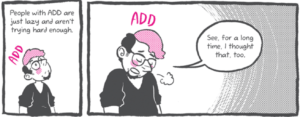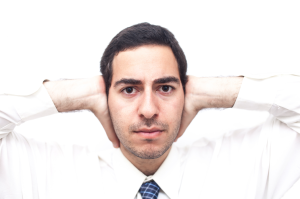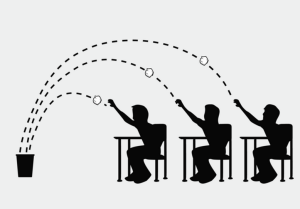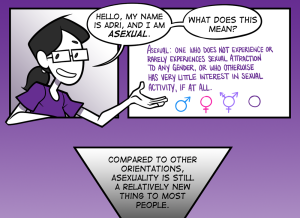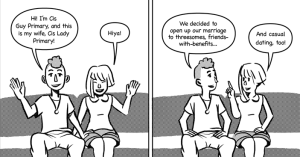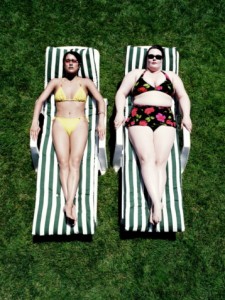
Source: Getty Images
Originally published on Libero Network and cross-posted here with their permission.
I am coming to realize something exciting and new that I would like to share with you lovely readers before I shout it from the rooftops:
(Picture me jumping up and down with glee as I say this.)
More days than not, I look at my reflection and smile with gratitude.
I don’t love my body all the time, but I know that I wouldn’t trade my body for any other body in the world.
I love my body because it is my vessel through life and my home, and that makes it beautiful.
And this is a huge deal – because for the majority of my life, I wanted to crawl out of my own skin.
So how did this come about?
Truth is: It was a long and complicated process that has taken me nearly two years of hard work, but here are some of the major factors that led me to where I am today:
1. I overcame my body dysmorphia.
And that lead me to see my body clearly and rationally for the first time.
Body dysmorphia is defined as a distorted perception of one’s appearance. I did not have full-blown Body Dysmorphic Disorder. Rather, my view of my body was a direct result of my eating disorder, rather than a separate diagnosis. But in my case, I perceived my body as bigger than it actually was.
I overcame my body dysmorphia by obtaining consistent, appropriate nourishment for a long enough time that my brain stopped obsessing about food and my body.
The effect that physical health has on the mind is incredible and often underestimated. You cannot expect the mirror to reflect the truth or to start thinking rationally until you feed your body and your brain.
I actually learned in my Biopsychology class just the other day how much caloric restriction affects the brain.
Neurons, the building blocks of the nervous system, are made up of dietary fat. So if you don’t “feed” your brain with fatty acids, your neurons will die off, which can lead to all sorts of cognitive – as well as physical – problems.
The brain also heavily relies on carbohydrates for concentration purposes.
Moral of the story?
It is impossible to improve one’s body image without improving one’s eating behaviors.
2. I started identifying the deeper, more complicated emotions…
…that I was repressing when I told myself I was “feeling fat.”
It sounds cliché, but it’s true that fat is not a feeling.
“Fat” is often a metaphor that we use to avoid experiencing and acknowledging complex, painful emotions.
It’s a way of taking a complicated, confusing emotional concern and transforming it into a physical one – something that is concrete and that we think we can “fix” by changing the way our bodies look.
For me, “I feel fat” really meant “I feel socially awkward,” because for most of my life, I struggled with social anxiety.
Identifying this allowed me to work on overcoming my social anxiety directly and to stop seeing my body as the problem.
3. I stopped reading celebrity magazines.
Celebrity gossip used to be one of my favorite guilty pleasures, but I gave it up when I realized that spending so much time looking at manipulated pictures was seriously detrimental to my self-esteem.
Today I prefer reading material that empowers me – novels, feminist blogs, and psychological articles.
4. I threw away my “sick clothes…”
…and bought cute new clothes that fit.
In addition, I threw away a sweater that still fit me but that reminded me too much of an unhealthy and unhappy time in my life.
If you have old clothes hanging around that don’t fit, get rid of ‘em!
Similarly, if you’re still wearing clothes that you wore in the height of your eating disorder that do not fit comfortably anymore, buy new clothes that fit well, feel comfortable, and that you feel confident in.
Check out my personal blog for a specific post dedicated to shopping in recovery.
5. I started writing letters to my body…
…apologizing for what I put it through.
When trapped in an eating disorder, it is not uncommon to feel completely disconnected from one’s body – or deeply resentful.
Writing letters to my body helped me develop connection and appreciation for my body and reminded me that a healthy mind and a healthy body go hand-in-hand.
6. I started thinking of my body as an instrument…
…a vessel that carries me through life and therefore requires fuel.
Today I am amazed with my body’s strength and resilience. I have put it through so much, but it has never let me down.
I know that when I am eating well, I feel strong, energetic, and capable in my own body – and that feeling of self-sufficiency and stability is the best feeling in the world.
When I look in my mirror today, I like the way that my body looks, because I appreciate how much it does for me.
Because I focus on what my body does for me, I do not find myself comparing it to anyone’s else’s body or society’s ridiculous “thin ideal.”
7. I focused on my passions.
When my mind is busy with positive, productive thoughts and my body is busy doing activities that make me happy, my physical appearance does not feel connected to my self-worth.
—
So starting today, my friends, show your bodies some love!
Even if you do just one thing, such as talking back to a negative thought you have about your body and replacing it with a positive one, it is a step in the direction towards positive body image.
What step(s) will you take today to work towards a positive body image?
Want to discuss this further? Login to our online forum and start a post! If you’re not already registered as a forum user, please register first here.
Jessica Clayton-Matthews is an Assistant Editor at Libero Network. She is studying Psychology and Women’s Studies at Simmons College in Boston, MA. Jessica is passionate about social justice and hopes to make a difference in the lives of others and advocate for social change. Having recovered from an eating disorder, Jessica is committed to spreading the word that freedom from eating disorders is possible. Contact her through her personal website or on Twitter @jessicaclaytonm.
Search our 3000+ articles!
Read our articles about:
Our online racial justice training
Used by hundreds of universities, non-profits, and businesses.
Click to learn more







